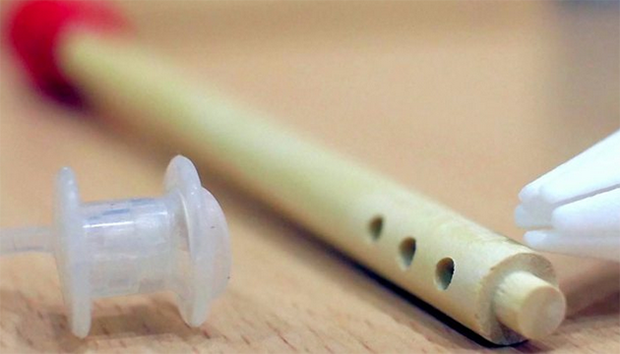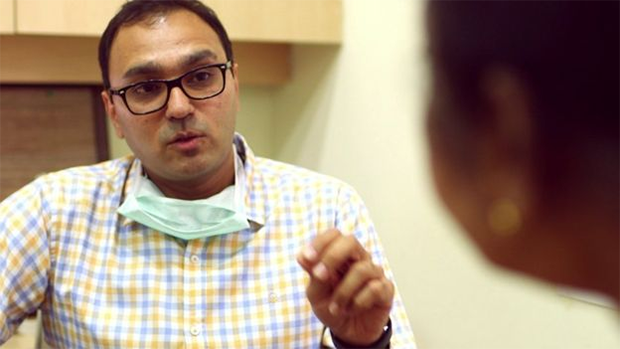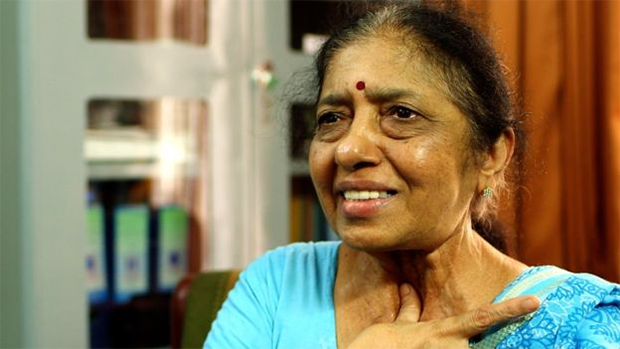|
Dr Vishal Rao is changing the lives of throat cancer patients in India.
Across the country around 30,000 patients a year are diagnosed with
cancer of the larynx. For those in the latter stages of the disease the
only option can be to have the voice box removed, leaving the patient
without a voice.
Replacement prosthetic voice boxes can cost up to $1,000 (£750) which
for many patients is unaffordable.
"The majority of our healthcare is private and cost prohibitive. That
was the reason that I felt that there was a dire need to actually help
these patients speak again, because speech is a right and not a
privilege," says Dr Rao who is a surgical oncologist at Health Care
Global in Bangalore.
|
|
 |
|
Feeling useless
Naryan Swami had his voice box removed as a result of cancer, and not
being able to speak had a huge impact on his life.
"I was a union leader in the company I worked for. I used to help other
workers. Without my voice I was useless for them," he says.
"Losing my voice was losing my life, I wanted to kill myself. I couldn't
do anything that I enjoyed."
After consultations with patients like Mr Swami, Dr Rao started to
wonder if there was something more he could do to help.
When a friend asked him why he didn't design his own affordable voice
box, it was the push he needed, and along with a friend, Shashank Mahes
who is an industrial engineer, they set to work researching and
developing.
Two years later, the result was the Aum voice box - costing one dollar
(75p). It's a small device measuring roughly one centimetre that is
inserted into the throat of patients who have had their voice box
removed.
It has given patients like Nalini Satyanarayana a new lease of life. She
is now able to speak and spends her time supporting and counselling
other patients who have undergone throat surgery.
"So I bounced back and I'm a living and smiling example of life after
cancer," she says.
The BBC's Innovators series reveals innovative solutions to major
challenges across South Asia.
"Throat cancer patients, especially in Stage 4, end up losing their
voice box because by that time [it] is completely destroyed," explains
Dr Rao.
|
|

|
|
"Now in this set of patients, they can speak again if the windpipe is
connected to the food pipe and the air supply from the lungs are able to
vibrate the food pipe. And it is here that the brain trains the food
pipe to vibrate again and help the patient speak."
The Aum voice box is able to be sold for such a low price - because
those who worked on the project gave their time and expertise for free.
The group were driven by wanting to make a social change and offer
patients the opportunity to have access to affordable healthcare, says
Dr Rao.
The device is also manufactured in India; most other available
prosthetic voice boxes had been expensive partly because they were
imported.
|
|
 |
|
Dr Alok Thakar, a specialist in head and neck surgery from the All India
Institute of Medical Sciences, believes the Aum voice box can be life
changing for patients.
"This is a simple device. Oftentimes it is the only ticket they have to
getting back to employment and to having a fulfilling and economically
sufficient life," he says.
However, he warns Dr Rao and his team that their challenge will be to
expand the availability of their voice box. He says a similar, previous
project failed to have a wide impact because of the difficulty of
producing it in sufficient quantities.
Dr Rao is working to make his innovation available to regional cancer
healthcare centres across India, so that all throat cancer patients,
regardless of their income, can have his device.
"This was a simple innovation, that has touched many lives in a very
simple way." |